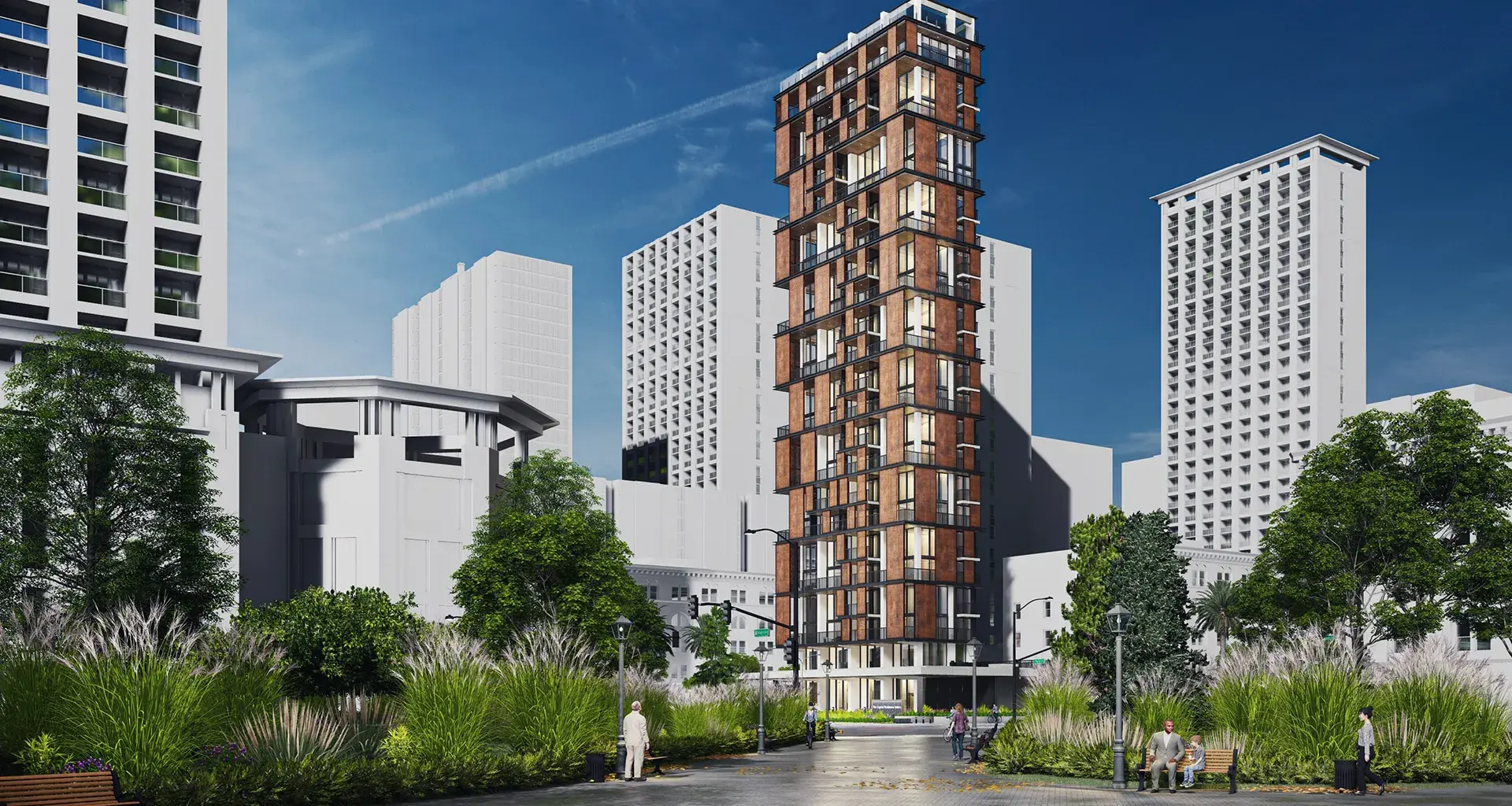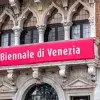Tecnológico de Monterrey’s School of Architecture, Art, and Design (EAAD) is inviting a reevaluation of the meaning and importance of the architectural discipline as a service for social transformation with the return of the Luis Barragán Chair.
“The relaunch of the Luis Barragán Chair represents much more than an academic initiative. It’s an invitation to imagine new futures through architecture.
“I firmly believe that ideas capable of transforming lives and communities, and reshaping the way we inhabit the world, will emerge from here,” said Juan Pablo Murra, Rector of Tec de Monterrey, at the ceremony to reopen the Chair.
According to Alfredo Hidalgo, National Dean of the EAAD, 25 years since the chair’s inception, its revival responds to the current global context and the need to act in the Latin American region.
“This chair is being revived with a focus on Latin American architecture, serving as a means to understand and recognize ourselves through our shared cultural, social, and environmental ties.”
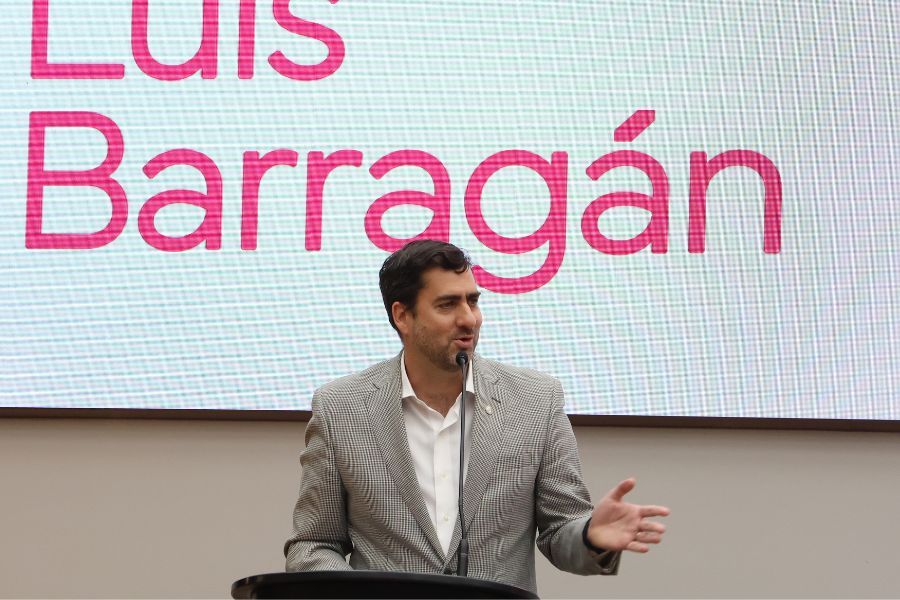
Luis Barragán Chair tackling current architectural challenges
A year before celebrating the 80th anniversary of the Architecture program at the Tec, Hidalgo emphasized that this new phase of the chair aims to address the current architectural challenges with an integrated approach and a collective perspective.
“Today, we face new challenges, making it essential to recognize and discuss the practices believed to be moving in the right direction (...) reflecting on what architects can contribute to our shared built environment.
“We invite everyone to add their voice to this essential conversation and join other efforts pursuing the same goal. We’re interested in identifying well-established, future-oriented practices that have made a positive impact.”
“Ideas will emerge here to transform lives and communities, and to reshape the way we inhabit the world.” – Juan Pablo Murra
Alessandra Cireddu, National Director of the program and chair leader, indicated the intention of building a space for critical, profound, and proactive reflection on what it means to project, inhabit, and transform the world today.
“With this relaunch, we aim to explore what it means to practice architecture in a global context defined by the climate crisis, social inequalities, and the urgent need to create spaces that respond to collective needs.
“Inspired by the legacy of Luis Barragán, who knew how to find beauty in the everyday and transcendence in the simple, we propose a collective space through empathy, generosity, and the willingness to rethink our practice.”
Diego Rodríguez, Associate Dean of Faculty added:
“Our shared objective is to raise awareness among students, professors, and architecture professionals about the meaning and importance of the discipline as a service for the integral development of society.”
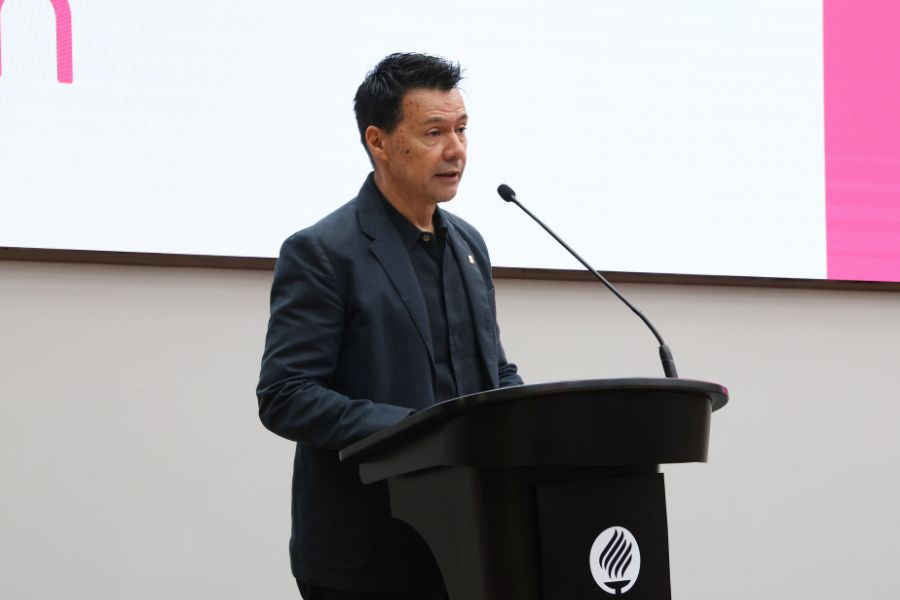
Latin American perspective at the heart of the chair
Alessandra Cireddu believes it is essential to view Latin America as a region where a profoundly relevant and distinctive vision of architecture is being created.
“European influence shaped the development of architecture in Latin America, leaving a solid legacy in terms of language, technique, and modern thought.
“However, today we’re witnessing a major shift in which Latin American practices are gaining increasing prominence on the global stage.”
Cireddu explained that this growing prominence goes beyond aesthetic issues, reflecting a range of values and approaches rooted in the unique diversity of contexts within the region itself.
The chair leader said that countries such as Mexico, Peru, Chile, and Colombia, to name but a few, have developed approaches to the discipline that recognize social inequalities, material wealth, and the various ways of inhabiting this territory.
“These practices reveal an architecture of thoughtful, context-specific solutions deeply rooted in the local environment, far from the industrialized approaches prevalent elsewhere in the world.
“For these reasons, the Luis Barragán Chair aims to center its efforts on the study, promotion, and critical reflection of architectural practices in Latin America.”

From ‘limits to edges,’ a disruptive vision
Including a visit from architects Jean Pierre Crousse and Sandra Barclay of architecture firm Barclay & Crousse, the Chair relaunched activities with a review aimed at challenging students to shift the local paradigm.
During a talk at the Monterrey campus, the speakers shared their insights on the concepts of limits and edges within the discipline, differentiating the two terms in relation to their impact and function in the architectural space.
“A limit is perceived as a boundary that separates one space from another, a literal border between what we understand as the inside and the outside, separating us from the danger, chaos, and complexities outside,” Crousse said.
In contrast, an edge is better understood as a transitional zone or interface, a space of interconnection that offers flexibility and allows for dialogue between different contexts, Barclay said.
The panelists explained how the edge can serve as a place for social interaction and shared experiences, inspiring architectural planning that revolves around this concept.
Both speakers stressed that a well-designed edge creates a harmonious relationship with the natural environment, rather than merely isolating spaces, thereby facilitating interpersonal relationships and engagement with its surrounding context.
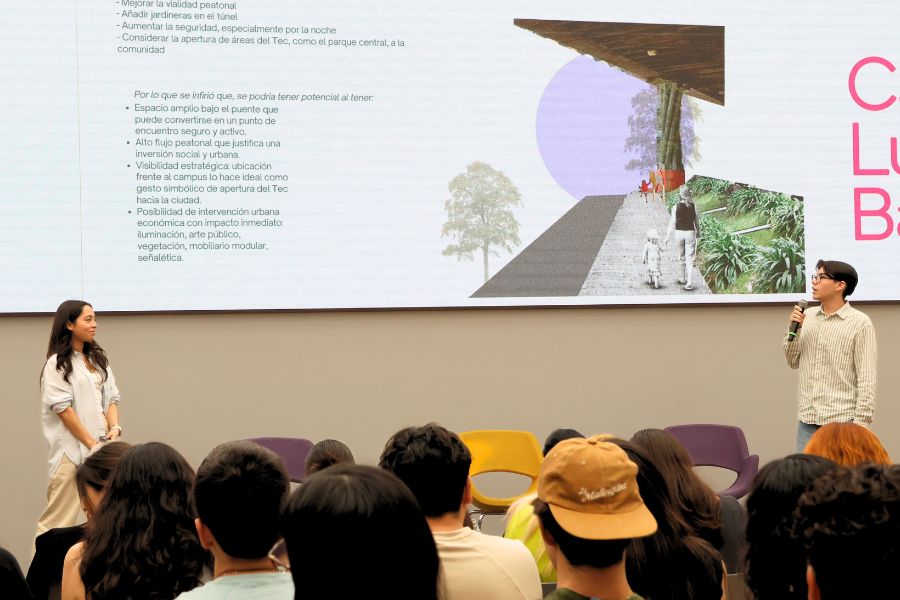
Locally rooted architecture
To conclude the inaugural edition of the return of the Luis Barragán Chair, Barclay and Crousse shared their thoughts on how to give meaning and value to the practice of architecture.
“We reflected on how to give value to being radical when rooting ourselves in our places as a starting point, enabling us to offer a response that resonates on a global scale.
“It’s about understanding our territory, landscape, and societies so that, from there, we can begin to generate design processes that are relevant,” Crousse said.
Using their own experience with architectural interventions in both Latin America and Europe, the speakers highlighted the importance of considering geographical, geological, and cultural elements when designing a building.
As an example, Barclay pointed to the work they did at the Place of Memory, Tolerance, and Social Inclusion (LUM)in Peru, where the socio-political history and uniqueness of the site were taken into consideration for the design of the museum.
They also demonstrated how architecture can have a functional purpose through their design for the Research Center and Accommodation in Peru, where they adopted functional infrastructure for water retention.
The architects emphasized the need to continue working together on local distinctiveness by combining aesthetics with service and balancing intimacy with public engagement.
The future of the Architecture Chair
Diego Rodríguez, Associate Dean of the School of Architecture, discussed the value of reviving the Luis Barragán Chair with CONECTA and outlined future plans.
“The main idea behind reviving it revolves around what architecture means to human beings and the crucial role it has in shaping our non-urban and natural environments.
“The intention is for the chair to travel to the different campuses. The next one will be in Guadalajara, then Mexico City, Querétaro, Chihuahua, etc. (...) We believe that this rotating format will have a significant impact.”
The Dean explained that the Latin American perspective was a defining feature of this relaunch, and it will be sustained given the need to address the shared challenges of the region.
The leader also noted that activities like workshops with students and faculty dialogues with guests were new features of the chair, generating a positive impact within the community.
“Jean Pierre mentioned to professors that the best architecture schools today are those with a very clear impact and a dependence on the place where they’re located.
“I believe that reflecting on locality and its elements as assets rather than obstacles is a mindset that can deeply resonate with both our students and alumni,” he concluded.
“The chair is being revived with a focus on Latin American architecture so as to recognize ourselves through our shared commonalities”.- Alfredo Hidalgo.
About the Luis Barragán Chair
The chair was created in 2000 as a space for architectural reflection and has brought together leading professionals, including winners of the Pritzker Architecture Prize and figures such as Shigeru Ban, Ricardo Legorreta, Eduardo Souto de Moura, and Glenn Murcutt.
It is a space that aims to be an environment for learning and meaningful contributions and now re-emerges with a renewed vision, focused on contemporary architectural challenges and Latin American practices rooted in global contexts, yet with local impact.
READ MORE:

